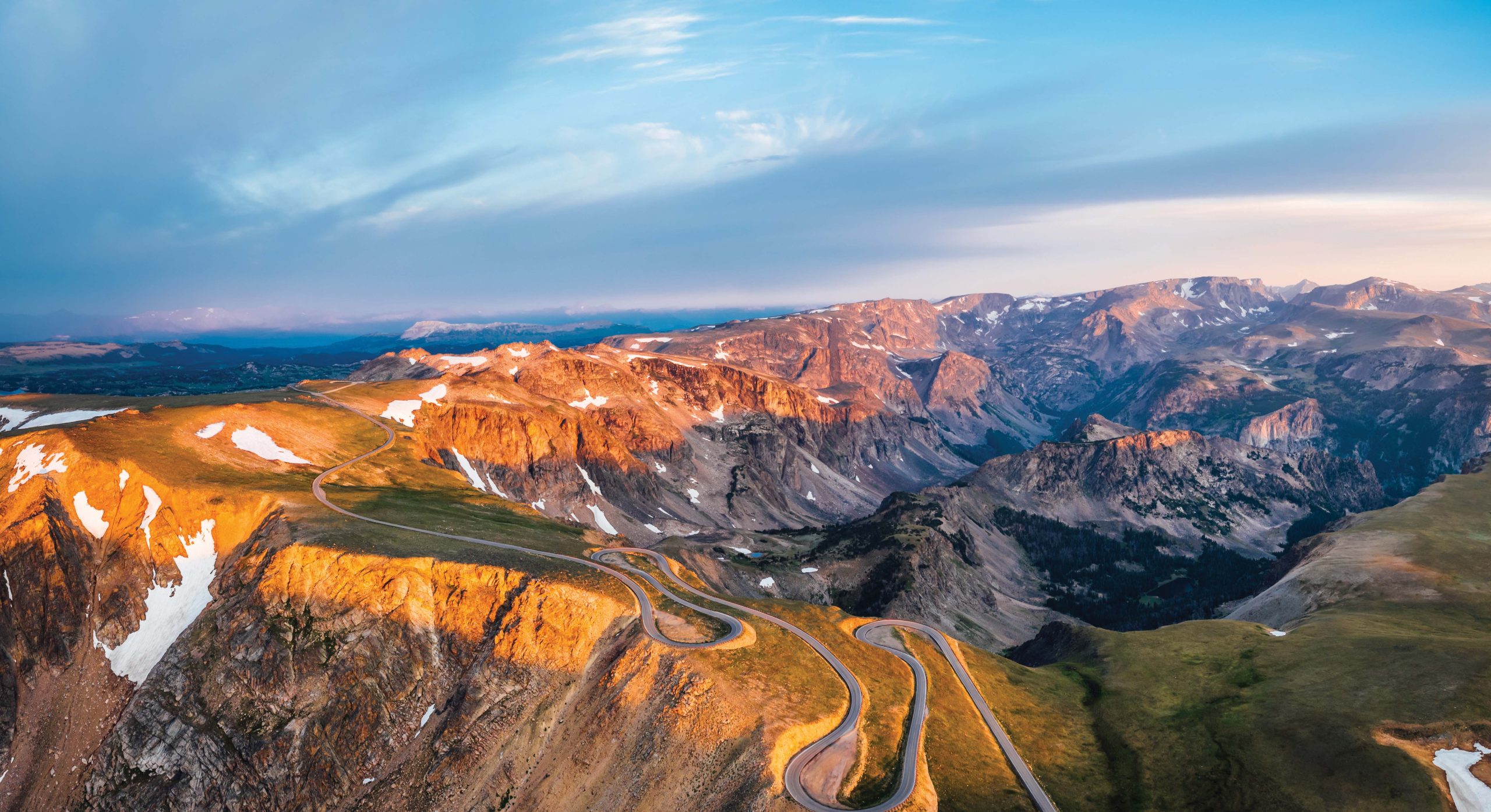
25 Sep Trailblazer
When Laura Orvidas took the reins of onX in 2018, the Missoula, Montana-based company had about 70 employees and did most of its business shipping state-specific digital maps stored on physical chips that users plugged into their handheld GPS units. If that description of the company — which, six years later, is a fully app-based technology business employing around 400 and a rising darling of venture capitalists — sounds archaic, Orvidas deserves much of the credit for its ascending trajectory. The world around Orvidas, who came to onX after an upwardly mobile career at the online retail behemoth Amazon, seems to move a little faster, which is ironic since her business is built around knowing precisely where you stand at any given time.
The value proposition of onX hasn’t changed since it was founded in 2009 by Eric Siegfried, a Montana State University engineering graduate whose groundbreaking product — a digital layer of topographic maps that detailed parcel-by-parcel land ownership — could be accessed by users while in the field. The product changed how many outdoors enthusiasts approached place-based activities like hunting or hiking. Indeed, the company’s Hunt app, like its other digital offerings available through a subscription, has become as critical to some users as their backpack or hunting rifle.
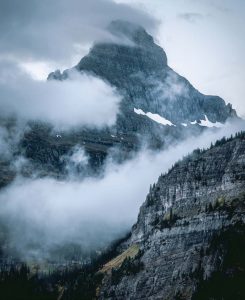
A foggy autumn morning slowly reveals Reynolds Mountain in Glacier National Park, which can be viewed along the famous Going-To-The-Sun Road.
Just as handheld GPS units have been replaced by mobile phones, which deliver everything from rides to meals to bedrooms through apps, onX’s services have similarly expanded from the hunting fields of the West to the trails of national forests, waters of lakes and rivers, and even ski slopes of the remote backcountry. And onX has evolved from simply providing users with location services to aggregating access data that informs public policy, advocating for stewardship of our shared spaces, and encouraging all flavors of outdoor adventure.
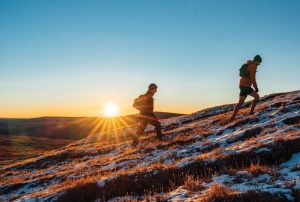
The early bird gets the views. Hikers make their way up the Beartooth Plateau as the rising sun illuminates a bluebird sky.
If it’s true that the company’s path was plotted by onX’s outdoor-oriented brand identity and corporate culture, it’s also true that Orvidas has nurtured, coaxed, expected, and curated much of its growth.
“I like helping people, and I like solving problems,” says Orvidas. Those twin impulses informed her undergraduate path toward biology and healthcare, and later work as a business consultant. “I never expected to be drawn to business, but science trains you to look at the world in a certain way, and as I learned about business, I recognized that it looked like a system, not unlike the ones in a human body. I needed to understand it to be able to pull all of its pieces together. I was eager to learn, and Amazon was eager to let me learn.”
A native of suburban Chicago, Orvidas moved from Boston to Seattle just as Amazon was hitting its stride. Her first job with the company was as a media seller. “There was so much going on at the company and so much I still needed to learn about business,” says Orvidas, who talked of her own professional trajectory on a Montana summer weekend as she prepared to join her family on a boating adventure. A Bozeman resident, she was spending the weekend at her cabin in the Swan Valley, and as we talked, her kids geared up for the outing. “The way I like to experience different aspects of business is the same way I like to experience different things outdoors, and at Amazon, I jumped from finance to operations to product management to web services and different roles and capabilities as the company was growing. By the end of my tenure, I was managing the Consumer Electronics division and Hardlines Private Brands business with over 600 people based in Seattle, Denver, and China.”
If her experience in Seattle grounded her in various aspects of business, it also furthered her outdoor education. “Being outside has always brought me joy, from riding my bike in the forest preserves outside Chicago as a girl to fishing with my father around the Midwest to hiking and rowing in New England,” she says. “But my time in Seattle cemented my love of the outdoors, and not only because it’s where I met my husband. It’s where I had my first backpacking trips, river floats, and, through my husband’s experiences in Montana, my first bird hunts.”
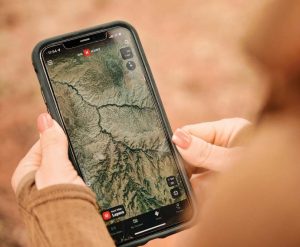
OnX’s most popular product is its Hunt app, which enables users to see landownership and land-use details at a fine scale.
Her Amazon career also gave her the challenges of balancing an intense job with the demands of young children. “We were approaching a decision point,” Orvidas says. “If I wanted to spend more time with my kids, I needed to shorten my commute. In order to do that, we’d have to move closer to downtown Seattle, and that meant my husband would have to change his job, and we’d have to buy a new house in the city, and I’d have to rearrange the daycare situation for my kids. Just as I was asking myself if I was sufficiently committed to Amazon to make these changes, a recruiter contacted me about onX.”
The opportunity to lead the young company, which had just received an infusion of funding from outside investors, appealed to Orvidas’ aptitude for both learning and creating. “It all came together: a great team of passionate people, a deep connection to the outdoors, and a technology that I saw could apply beyond hunting. I had to take it.”
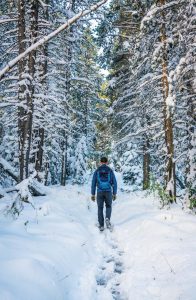
An early-season storm covers the Mystic Lake Trail in a blanket of snow.
Six years into Orvidas’ tenure as CEO, onX is evolving as quickly as Amazon did during its growth. The company moved beyond Missoula and has a sizable and growing presence in Bozeman and an expanding workforce outside Montana. Its Hunt app remains one of onX’s largest products, but it now has millions of users who subscribe to its various mapping products. In 2022, the company received nearly $90 million in additional investments to help capitalize a new growth phase.
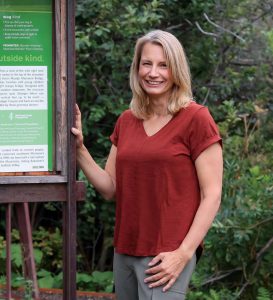
OnX CEO Laura Orvidas has combined a compelling brand identity with cutting-edge technology and the rising interest in outdoor recreation to create innovative new digital mapping products.
What hasn’t changed is the company’s focus on expanding public land access and enabling rewarding outdoor experiences. “We are a tech company that empowers our community via shared passions and interests to steward and protect the outdoor experience,” says Orvidas, paraphrasing the company’s published identity. “Our mission is to awaken the adventure inside everyone.”
Users experience that brand identity through products that capably show them where they are in the physical world and help describe their surroundings. For instance, onX’s Hunt app has added layers that show the dates of recent forest fires to guide hunters to the abundant wildlife around regrowth areas. A new layer allows users to slide between satellite imagery to see how the landscape’s vegetation and use have changed over the recent past. Other layers show land enrolled in various access and wildlife-habitat programs.
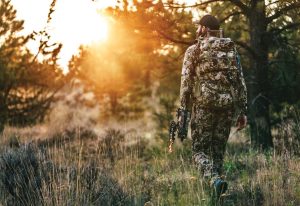
An archery hunter moves through the brush, keeping his eyes and ears open.
This year, the company entered the fishing market with the acquisition of a mapping business called TroutRoutes. Another product, which maps depth contours, boat ramps, and other access points on lakes and waterways, is currently only available in Minnesota, but the company plans a wider rollout. The Hunt app has expanded to Canada, and onX has plans for mapping services beyond North America. It has also increased its presence in the backcountry motorized community with its onX Offroad app that delivers trail descriptions, difficulty ratings, and user photos. And human-powered explorers can deploy the onX Backcountry app to discover backpacking, mountain biking, hiking, and rock-climbing routes.
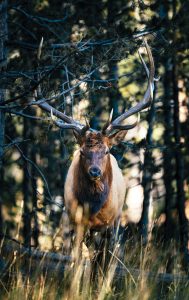
A mature bull elk lifts his head up from grazing to assess the cameraman.
Orvidas says each product is informed by a core belief that venturing outdoors is not only good for users’ physical and psychological health, but that, by building advocates for physical places, those places can be conserved and improved. “The more people who get out and experience the outdoors, the more people want to protect those spaces and ensure that they’re preserved to adventure on forever,” she says.
But Orvidas acknowledges the tension in promoting outdoor accessibility and experiences, one that’s familiar to users who have noticed an uptick — and in some places, a crescendo — of activity since the COVID pandemic, which sent people into public lands and kindled many Americans’ discovery of the restorative value of the outdoors. How does onX balance discovery of the outdoors with use, overuse, and even abuse of special places? By helping to increase the number and variety of places to go outdoors. That might mean highlighting overlooked access points on public land, delivering products to improve private-land recreationists’ experiences, or advocating for lowering access barriers to existing public parcels.
“When we are successful at what we do, then we send more people out into the outdoors,” Orvidas says. “We feel an obligation to expand opportunity, but also awareness and stewardship, so that people are going out into those places responsibly.”
To expand users’ access to and enjoyment of the outdoors, onX aspired to restore America’s public trail systems by 150 miles in 2024 and create or improve access to 150,000 acres of public land. The company hit both those goals mid year.
Since 2018, onX has been granting awards to communities and partners to achieve its twin goals of promoting access and stewardship. “One of those is an initiative that we call Project 1000, in which we have partnered with Tread Lightly to organize clean-up efforts on our public lands and engage at least 1,000 community members to take care of lands in their neighborhoods,” says Orvidas, who notes that the project’s numeric goal has also been met. The company regularly publishes research that details the amount of inaccessible public land or highlights acreage in the West that’s landlocked by archaic corner-crossing rules that prohibit access to checkerboarded parcels of public land.
“I’m proud of our advocacy work that highlights access problems,” says Orvidas, “but the reason we are able to aggregate data is because we built and continue to build our own technology, one that gives us advanced analytic capabilities. I’m really proud of our team for mining our data and publishing reports that drive public policy to improve access.”
The outcome of best-in-class technology with a public purpose squares with Orvidas’ internal compass. “Did I always want to be a CEO? I can answer that pretty equivocally: no. From a young age, I was going to be a doctor or a veterinarian or a physical therapist. I wanted a profession in healthcare because I like helping people and solving problems. I think the great surprise of my professional life has been that there are all sorts of ways to achieve that goal that I didn’t see as a younger person, and it turns out being a CEO is one of them.”
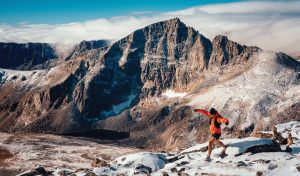
A hiker makes his descent down Mount Rearguard in the Beartooth Mountains, with Metcalf Peak looming in the background.
Under Orvidas’ leadership, onX is moving into new landscapes and new seasons. “We’ve extended our place-based value proposition to include whitetail hunters and people who hunt on private property, giving them tools to be successful habitat and land managers,” she says. “If you distill what that has in common with our other products, we want to give our customers the confidence to go further and be more successful in their pursuit, whatever it is.”
The company recently launched a new mapping tool called the Avalanche Terrain Exposure Scale, which helps backcountry skiers, snowboarders, and snowshoers make more informed decisions about venturing into avalanche-prone country. “That’s an example of a hard customer problem that needs to be solved, and we can offer a solution through our technology,” says Orvidas. “It’s where technology and content come together, which is a large part of our DNA. Our content is an important part of awakening the adventure in our customers, to help people understand what is possible and provide inspiration and education to help people go farther. That’s very much part of our brand promise. We’re not just providing a product; we want to inspire people to be able to do the things they want to do.”
Orvidas notes the number of impediments to outdoor participation, from transportation to knowledge to gear. “Hunting is a good example,” she says. “It’s not easy to get into hunting if you’re hunting-curious and don’t have someone to guide you. Some of our inspiration and education content is intended to bridge gaps for people who are outdoors-curious, to guide them to their first hunt or hike or adventure.”
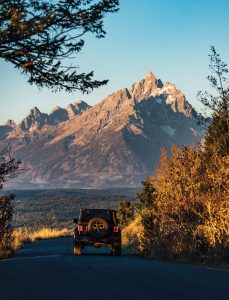
Signal Mountain Road offers the driver of this Jeep immense sun-kissed views in Grand Teton National Park.
In turn, the company has its own gaps to bridge. Orvidas says navigating a technology business, especially in Montana, has its challenges. “I credit the early success of the product to being in Montana, because many of the folks who started the company were the target customer,” she says. “They were able to draw on their own personal experiences to produce something that was amazing. As we’ve expanded in order to meet what we need, we’re hiring from outside of Montana, but we think it’s really important for all of our employees to come to Montana at some point to experience where the company was founded and what it’s like here. It’s very much part of our story.”
She notes that, increasingly, employees are located outside the state. About half of onX’s 400 employees work beyond Montana’s borders. “One of the hard parts about relocating an employee to Montana is how fast our real estate prices have risen,” she says. “In the past, we were able to relocate people to Montana because the cost of living was equivalent to elsewhere. But lately, we’re hearing from new hires that they can’t afford to live here.”
OnX is also outgrowing Montana’s technology infrastructure. “We have 14 times the revenue from when I joined six years ago, and we plan to sustain that growth,” says Orvidas. “We’re at a scale where, even if you are from Montana and came up through our excellent talent pipeline through our universities, you may not be prepared for the scale at which we operate. Hopefully, our success will spawn more tech companies, and the scale will grow so talent can stay here, but right now, we’re experiencing growing pains.”
Orvidas’ kids are nearly ready for their outing.
“We’re an outdoors family,” she allows. “I use our product all the time. I think I’m a jack-of-all-trades when it comes to the outdoors, sort of like in business. I spend a lot of time on horseback, on trails or in an arena cutting cows. We’re going boating now. I like hiking with my dogs on the M Trail. I enjoy cross-country skiing. Most of our weekend time is outdoors in some way or another.”
In the end, Orvidas, like many who helped shape onX, is the customer, too. “All of our adventure is made possible by the public lands that we have access to,” she says. “One of the things that drives me at onX is that I have that personal experience that brings me joy. I want our customers and our community to have those types of opportunities to bring them joy in the future.”
Andrew McKean writes about hunting, conservation, and wildlife management from his home in Glasgow, Montana. The former editor in chief of Outdoor Life magazine and the current hunting editor, McKean is the author of How To Hunt Everything. He also contributes to a number of national publications.
Professional wildlife and landscape photographer Seth Royal Kroft is a Billings native who spent his upbringing participating in all the outdoor activities Montana had to offer. Kroft’s work focuses on the mountain regions of Montana and Yellowstone National Park, and has been featured in hotels, luxury apartments, magazines, travel guides, billboards, magazines, international online articles, and more. In collaboration with Aspinwall Mountain Wear, Kroft recently opened his own art gallery in the heart of downtown Billings; sethroyalkroft.com.



No Comments